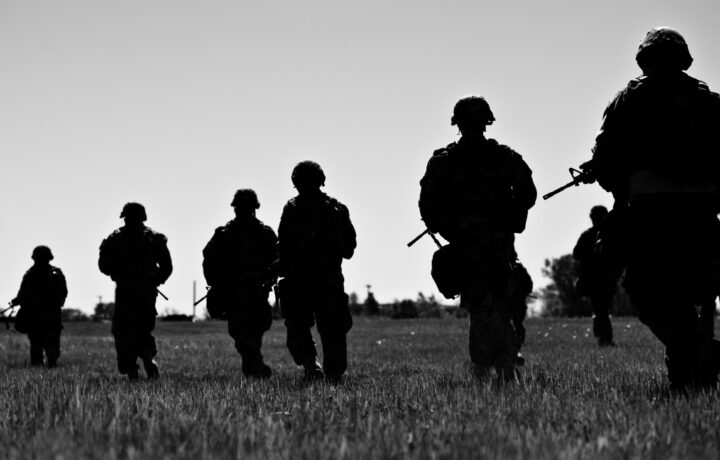Earlier this summer, United States Air Force and Space Force recruits were issued a “training version” of the U.S. military’s M4 carbine. In July, trainees arriving for Basic Military Training at Joint Base San Antonio-Lackland, Texas, received an “inert” version of the standard issue rifle carried by most American warfighters following their initial week of weapons familiarization.
As Air & Space Forces magazine reported at the time, “The M4s sport a red flash suppressor to signal their inert status,” while the trainees were expected to carry the carbine for the remainder of their 7.5-week program and store the inactive firearm in their lockers.
“Incorporating practice weapons into realistic scenarios in a controlled environment builds confidence, corrects errors, and manages stress by providing regular practice that reduces hesitation and increases combat effectiveness,” explained Col. Billy Wilson Jr., commander of the 737th Training Group, who reinstituted the program.
The inert weapons are carried everywhere “except when at medical and processing appointments when wearing any combination of the service uniform.” Recruits can still request a waiver that would exempt them from hauling it around, such as for medical reasons.
A Return to Warfighter Mindset
U.S. Air Force trainees haven’t had to carry a firearm on a daily basis during training since the practice was halted in 2012, but the 737th Training Group, which oversees Basic Military Training for the air and space services has stressed the importance of instilling a “warfighter mindset” in the recruits.
The shift is to prepare future Air Force Airmen and Space Force Guardians for great power competition against potential near-peer adversaries including China and Russia.
However, the U.S. Air Force’s senior NCO stated that he believes recruits carrying inert firearms during boot camp doesn’t go far enough. At last week’s Air and Space Forces Association’s Air, Space and Cyber conference, Chief Master Sergeant of the Air Force Dave Flosi said during a roundtable with reporters that he believed recruits should be carrying live weapons as they complete their basic training.
Flosi’s goal would be to put real weapons in the recruits’ hands.
“We really would want to get the real ones because the threats are real,” Flosi suggested. “The environment is dangerous.”
The Air Force’s senior NCO also explained that the change is to make Airmen and Guardians understand that they’re in the military and taking on a profession of arms, which could require that they face combat.
“Understanding lethal means, and understanding the responsibility that comes along with it, that’s time well spent,” added Flosi.
The Space Force’s top enlisted leader, Chief Master Sgt. John Bentivegna shared a similar sentiment, telling Military.com that the practice of disassembling and reassembling a weapon can be a “vital exercise” that can help recruits with critical thinking and solving complex tasks as they transition from civilian life to the military.
“The transformation from civilian to Guardian is significant,” Bentivegna said, “Because we’re an all-volunteer force, and these are men and women who have decided they want to come join the Space Force team and become a Guardian.”
The Military and Firearms
It would be easy – and wrong – to think that those in uniform are always armed. This isn’t the case.
As Military.com also reported, though it has been a long-standing practice for U.S. Army and U.S. Marine Corps attendees at boot camp to carry and maintain real rifles, those recruits are given live ammo only when on the firing range and under close supervision.
In addition, the U.S. Navy does not currently make its enlisted recruits carry rifles during basic training.
After basic training, most military personnel are not even allowed to carry firearms on military bases. This is because military bases are federal property, and the Gun Control Act of 1968 prohibits firearms on federal property with a few exceptions. This includes base law enforcement officers and military police, who are permitted to both conceal and open-carry firearms during their duties.
A Department of Defense (DoD) rule from 2016 does permit a base commander to allow troops to apply for concealed carry of personal weapons – and that only came about in the wake of mass shootings, including multiple active-shooter incidents on military installations.
However, it didn’t have the support of the 20th chairman of the Joint Chiefs of Staff. In 2014, then-Lt. Gen. Mark Miller, told lawmakers “I don’t think soldiers should have concealed weapons on base.”
For now, Airmen and Guardians going through boot camp will be carrying inert weapons with them at all times.




